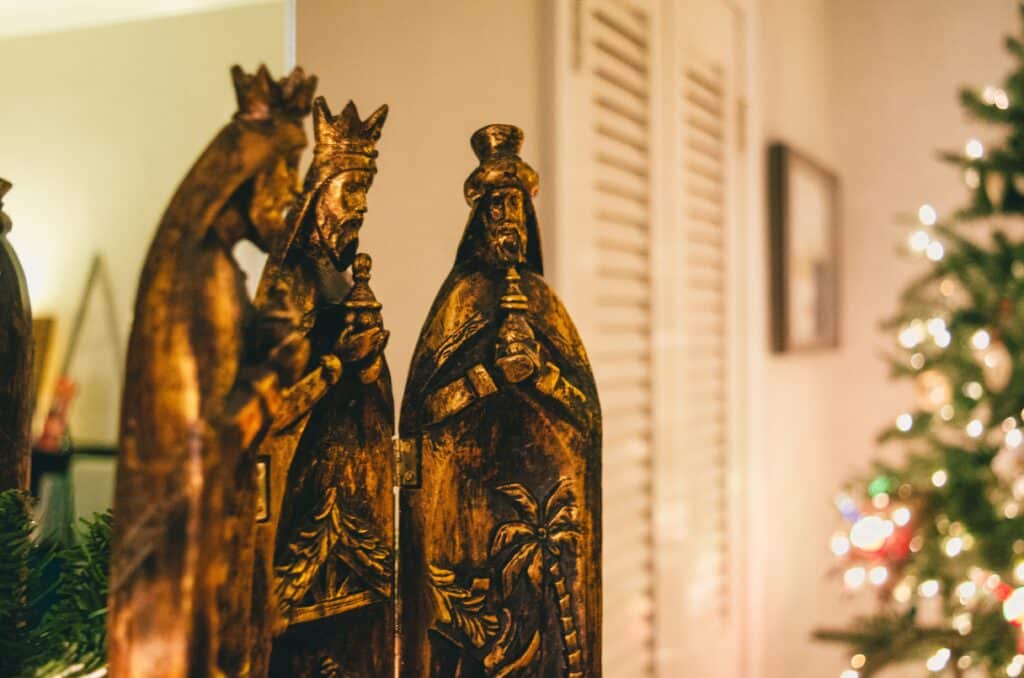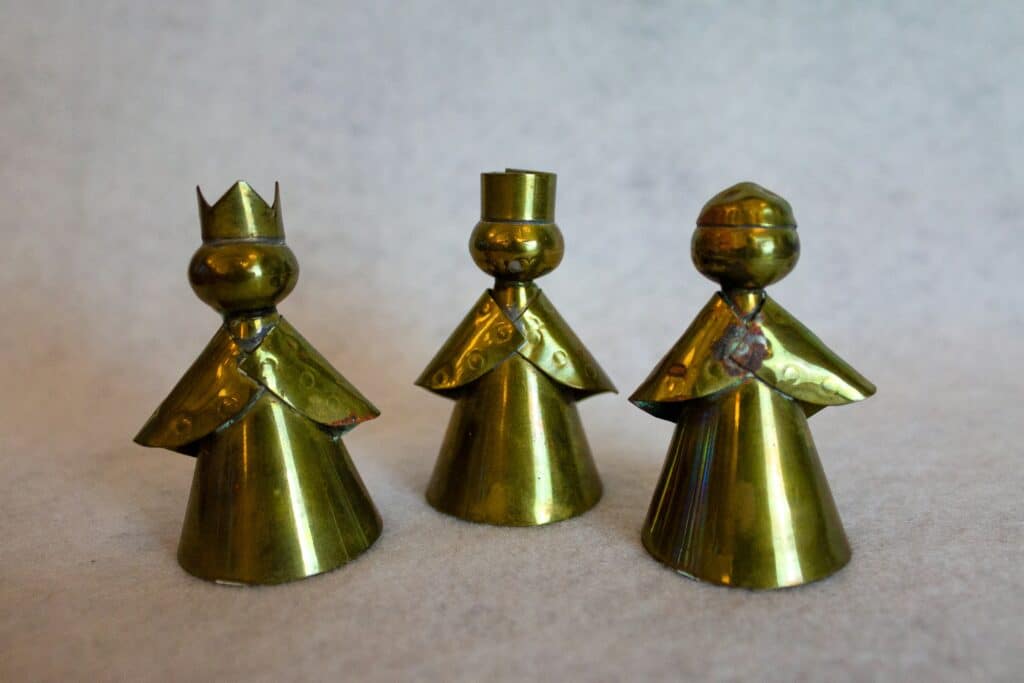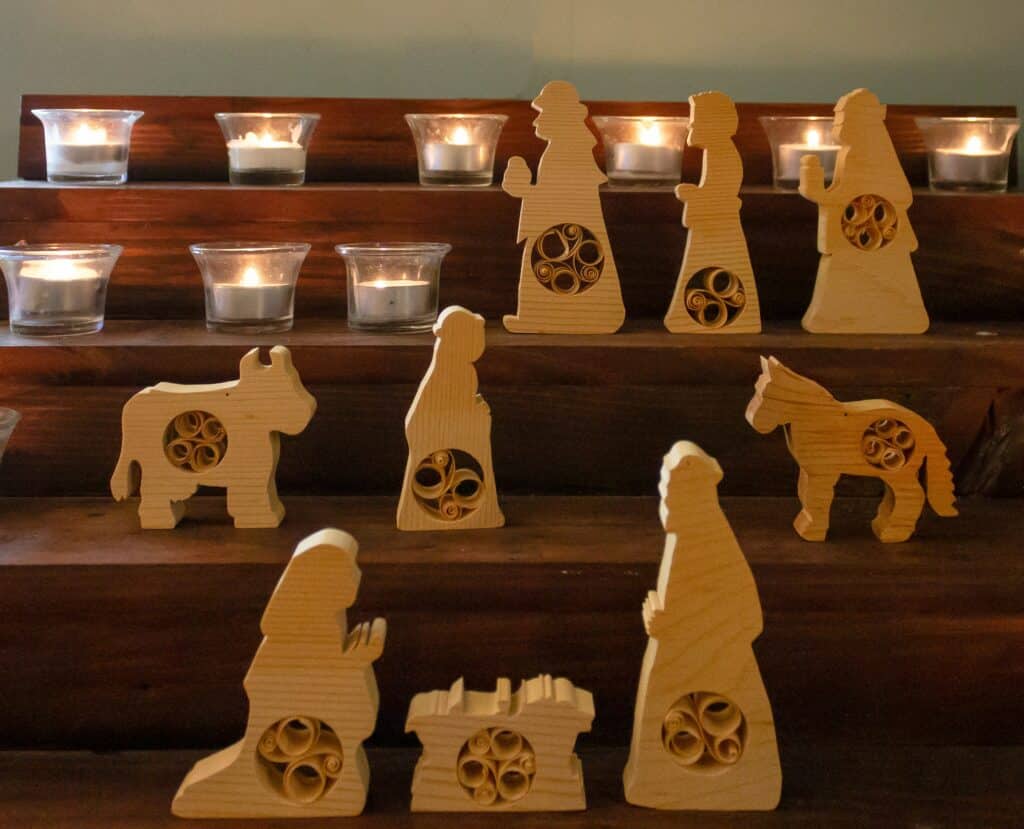
Celebrate Three Kings Day the Mexican way! Here’s a peek into Mexico’s festive traditions for this special day. Get more detail below.
- Los Nacimientos (The Nativity): A centerpiece in Mexican homes, the Nativity scene dynamically evolves throughout the season, with the Three Wise Men making their grand entrance on the eve of January 5.
- Gifts from the Three Kings: Move over, Santa! In Mexico, children eagerly await gifts from Melchior, Caspar, and Balthazar on January 6, often leaving shoes out for a magical surprise.
- Three Kings Cake: Beware the hidden baby Jesus in every slice of Rosca de Reyes. Find it, and you’re hosting the next party.
- A Feast for a King: Atole and Rosca de Reyes are just the start. Expect a spread of traditional dishes like black beans, rice, and slow-cooked meats.
- Festive Farewells: January 6 is a day of relaxation and reflection, often the last holiday before returning to routine.
Learn more about Mexico’s Three Kings’ Day in this guide from our team at Remitly.
What is Three Kings Day?
Three Kings Day is a holiday with many names: Three Kings Day, The Day of the Kings, Epiphany, Twelfth Night, Little Christmas, Theophany, Timkat, and Reyes are just a few.
Whatever its name, its origin is ancient. It can be traced back to the 4th Century when the Greek-speaking portion of the eastern Roman Empire celebrated it.
It celebrates the journey of the Magi, or Three Wise Men, who brought gifts of gold, frankincense, and myrrh in the famous biblical Christmas story.
Much of Latin America, including Mexico, concentrates its holiday festivities on January 6th, el Dia de Los Reyes (Day of the Kings). The 12th day of Christmas signals the end of the holiday season.
Who were the Three Kings?
The Three Kings were Melchior, Caspar, and Balthazar. Melchior was the King of Persia, Caspar the King of India, and Balthazar was represented as an Arabian King and occasionally a King of Ethiopia.
Because they brought gifts to the infant Jesus, the kings are sometimes compared to Santa Claus.
Traditions for Three Kings Day in Mexico
Each year, people look forward to the arrival of Three Kings Day in Mexico and the southwestern U.S.
Los Nacimientos (The Nativity)
The Nativity scene plays an important role in Mexican Christmas celebrations. It’s used not only to depict the birth of the Christ child but also plays the role of a Christmas calendar of sorts. Pieces are added to the scene over the Christmas season as they played out in history.
For instance, the baby Jesus figure is placed in the manger on Christmas Eve. Los Reyes Magos (the Three Wise Men) and their animals are added on the evening of January 5 to depict their arrival. As a result, the nativity scene isn’t complete until Three Kings Day in Mexico.
Gift-giving and Santa Claus
The Three Kings are the traditionally prominent figures of Christmas in Mexican culture. Santa wasn’t a “thing” until the 20th century when the United States commercialized “Santa” as an icon for the gift-giving season.
Generally seen as “imported,” Santa did not gain nearly the same foothold in Mexican culture as in the United States. Even so, in some areas of Mexico, lucky children receive gifts from Santa, usually on December 24, and from the Three Kings on January 6.
Dia de los Reyes is when many children living in Southern Mexico and most of Latin America receive gifts. Mexican children often leave shoes out the night before Three Kings Day so the wise men can leave small gifts for them.
Shoes filled with hay for the kings’ hungry camels are left out before bed. In the morning, excited children find their shoes empty of hay and filled with brightly colored candies and small toys. There are often gifts under Christmas trees or by the nativity scene.
So, don’t be surprised if, in southern Mexico, you get some dull stares if you ask children if they’re excited about Santa. They’re not. They’re waiting for the Three Kings!

Three Kings Cake
When visiting Mexico during the holidays, keep in mind that those lovely-looking, round, donut-shaped pastries are dangerous. Why? We’ll explain.
Originating in Spain and brought to Mexico by the Spanish, Rosca de Reyes (Kings’ Cake) is more like sweet bread.
Its shape is symbolic of a crown and embellished with red and green candied fruits and nuts. The fruits symbolize two things to the Mexican people: the jewels of the Three Kings’ crowns and the colors of the Mexican flag.
Be careful while you’re eating the pastries. Each cake is baked with a small ceramic or plastic baby Jesus inside. Tradition dictates that the lucky person who gets the baby Jesus in their serving must complete an important task for the fiesta on Día de la Candelaria, or Candlemas Day in English, on February 2nd.
Candlemas Day is a Christian festival that remembers the purification of Mary after the birth of Jesus and when Jesus was presented in the temple. To mark the occasion, the Jesus figurine in the family’s nativity scene gets dressed up in a costume, and friends and family gather to share a meal. Whoever received the figure in the cake in January prepares tamales for the feast.
Three Kings Cake recipes
The Rosca de Reyes cakes come in several sizes and can be plain or filled. The fillings are typically cheese-based but come in other delightful flavors, such as guava, pineapple, and cajeta, caramelized goat’s milk.
If you’d like to prepare a Rosca de Reyes of your own, check out these recipes.
Three Kings Cake (Rosca de Reyes) from Arthur Baking
This recipe makes whipping up your own cake simpler with a premade fruitcake fruit blend. However, you can substitute dried or mixed fruits if you wish.
Bread Machine Three Kings Cake from The Cookie Couture
Check out this convenient recipe if you have a bread maker at home. It features candied fruit, dried pecans, and a hint of orange blossom water.
Rosca de Reyes Recipe from Mexico in My Kitchen
Created by a former Mexican school teacher named Mely Martinez, the Mexico in My Kitchen food blog is a great go-to for authentic Mexican recipes. Martinez’s recipe is highly customizable, allowing you to use candied citron, orange peels, cherries, or quince paste stripes as toppings.
La Mexicana’s Rosca De Reyes (King Cake) from Food.com
Marzipan filling brings richness to this take on the traditional cake. The author also suggests using dried beans instead of a Jesus figurine, though you’re free to use one if you’d like.
Rosca de Reyes from Isabel Eats
Created by a first-generation Mexican-American food blogger, this recipe brings the traditional flavors of guava cake to the festive cake. This recipe prepares two rings, so it’s great for entertaining.
Traditional Mexican food on Three Kings Day
You didn’t think the cake was the only thing on the menu, did you? It’s customary when friends and extended families come by on Three Kings Day to serve either hot chocolate or a uniquely Mexican beverage called atole.
Atole is a corn-based drink served rich, thick, and warm and is usually served with the Rosca de Reyes.
Other traditional foods for the feast of the Epiphany are black beans and rice, soups, and salads that highlight yucca, nopales (cactus leaf), and plantains. Slow-cooked meat is usually on the menu, often chicken or pork.
Relaxing with friends and family
January 6 is often the last day businesses and schools are closed for the winter holidays. As a result, many people spend the day relaxing with friends and family to get themselves ready for the return to work and class.
It’s also customary for the Christmas tree to be taken down during the afternoon or evening. However, the nativity set will usually remain in place until Candlemas Day.

More about Christmas in Mexico
During the Spanish colonization of Mexico, Catholic tradition became mixed with Indigenous beliefs, and over the centuries that followed, Mexican people made the important Christian holiday their own.
The season begins on December 12th with the Day of the Virgin of Guadalupe, a Catholic feast for celebrating when an image of the Virgin Mary appeared before a young indigenous man named Juan Diego in 1531.
Then, starting on December 16th, Mexican people mark the days leading up to Christmas Day with Las Posadas, which represents Joseph and Mary’s journey to Bethlehem to find a safe harbor for their unborn baby Jesus.
As in many other countries, Christmas Eve is on December 24th. Many families exchange gifts and share a large feast before attending midnight mass, which marks the arrival of Christmas Day.
The official end of the Christmas season is Three Kings Day.
Celebrate Día de Reyes wherever you are
While Mexican immigrant communities in the U.S. celebrate the winter holidays “the American way,” many still preserve the traditions of Three Kings’ Day. Some even send money to Mexico as gifts for their loved ones.
Even if you’re not of Mexican heritage, you can incorporate elements of the celebration of the Reyes Magos into your traditions by preparing a delicious Rosca de Reyes or presenting gifts to friends and family.